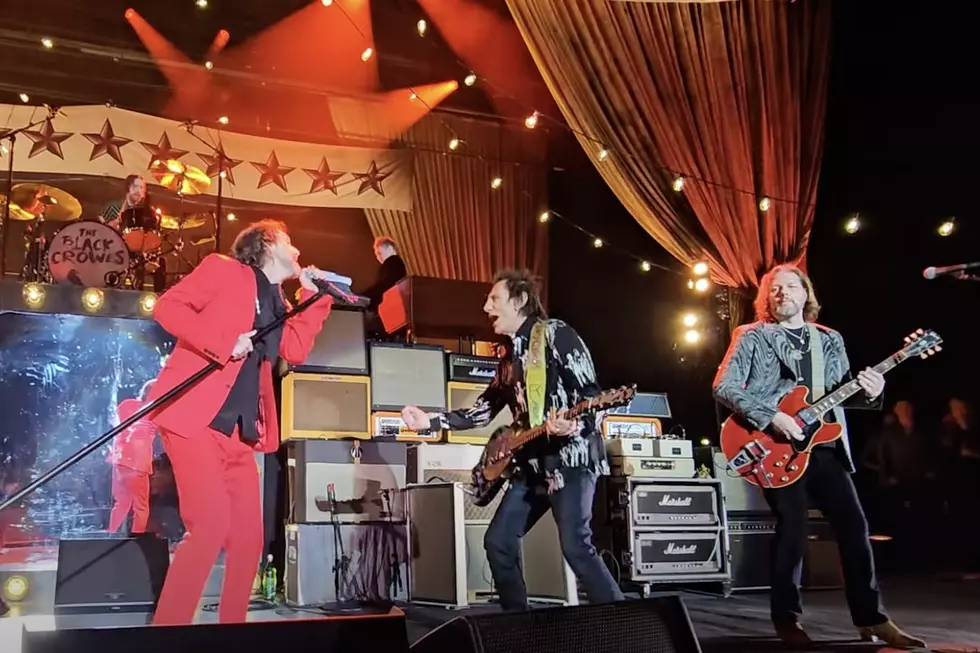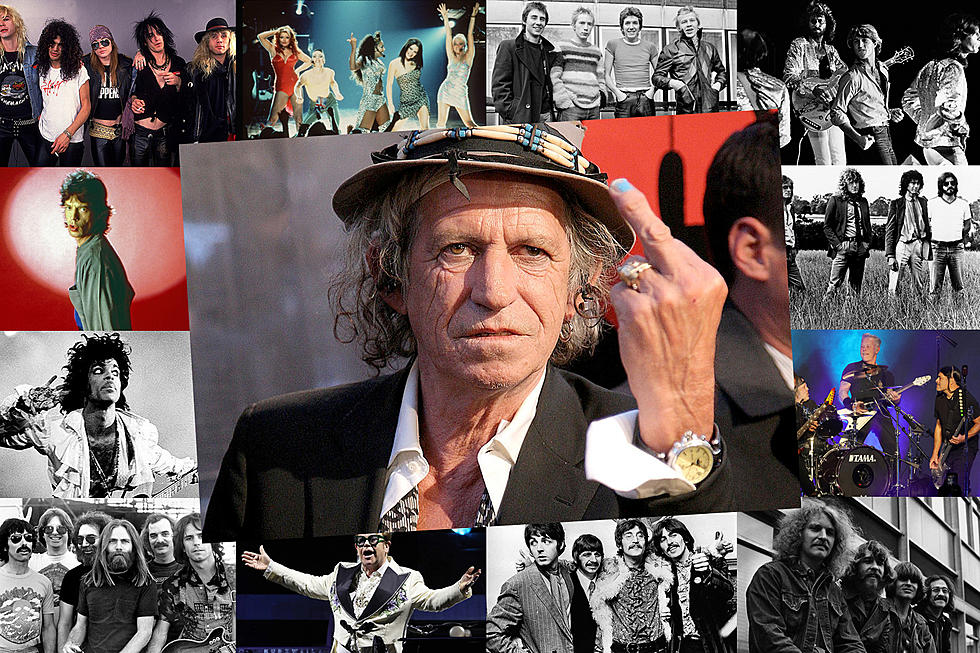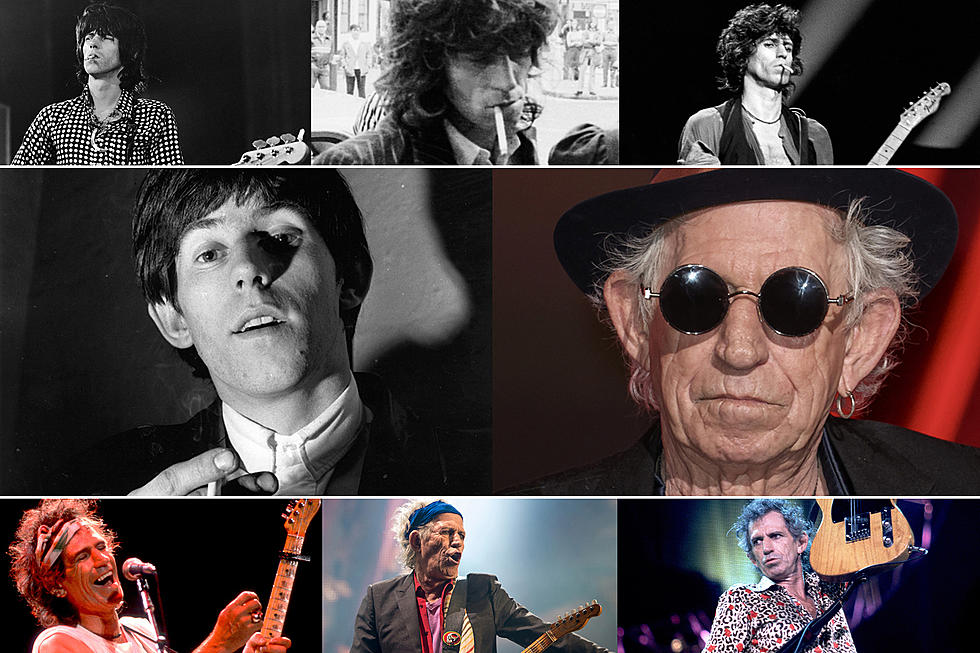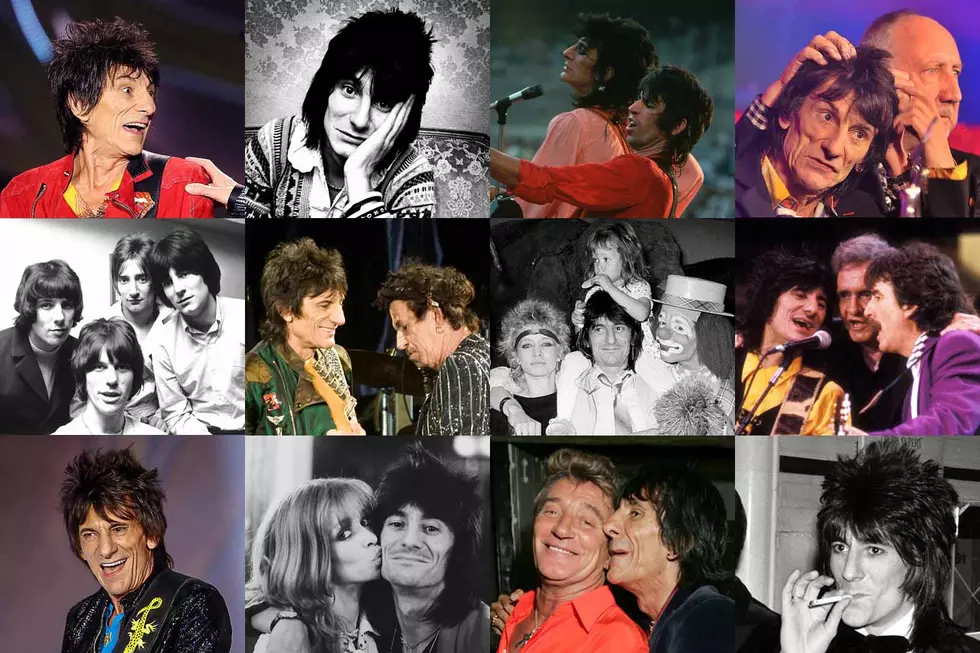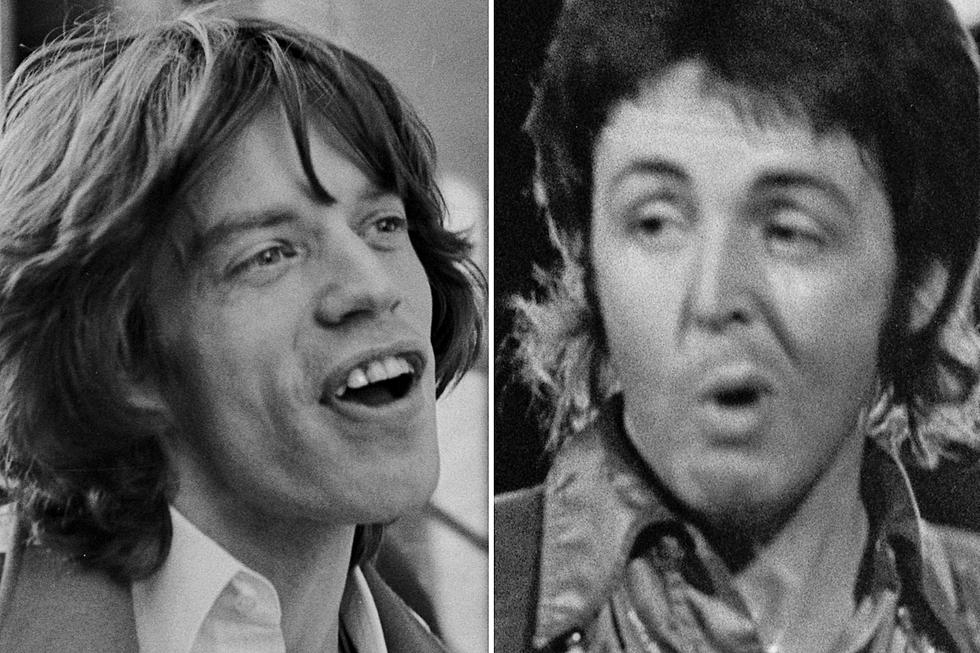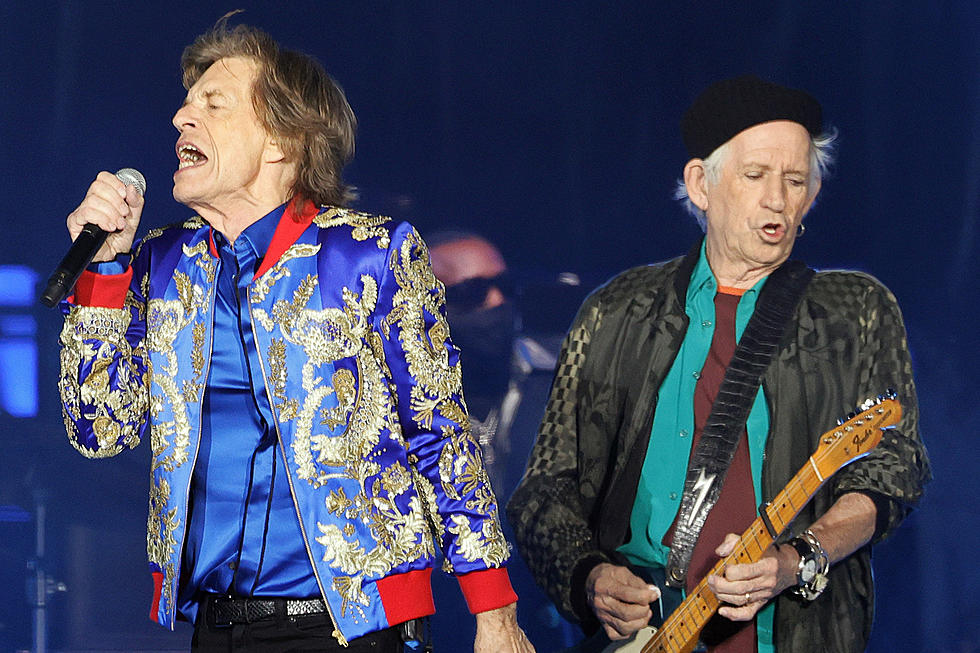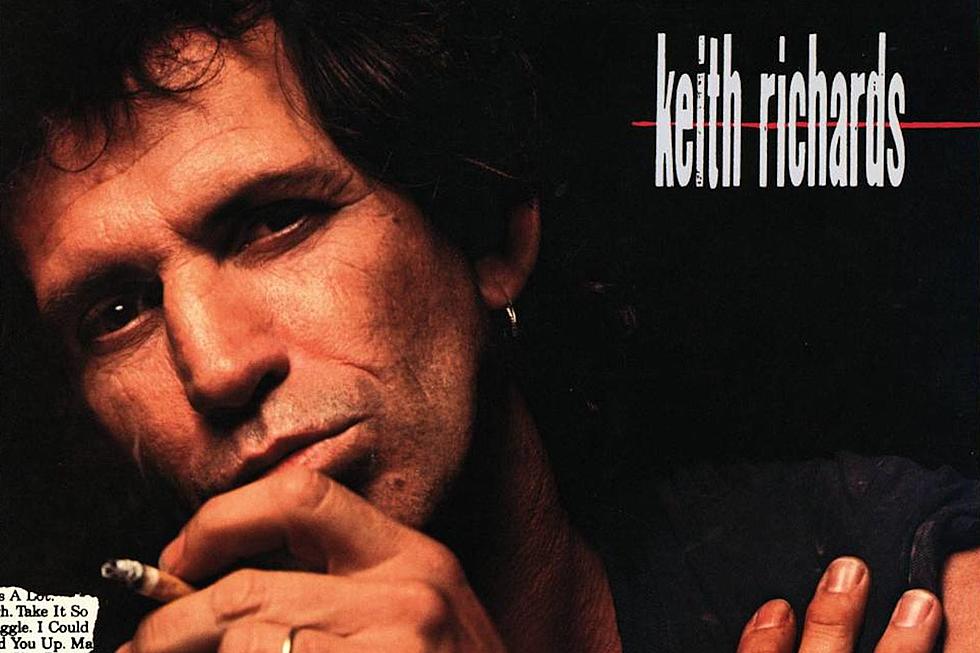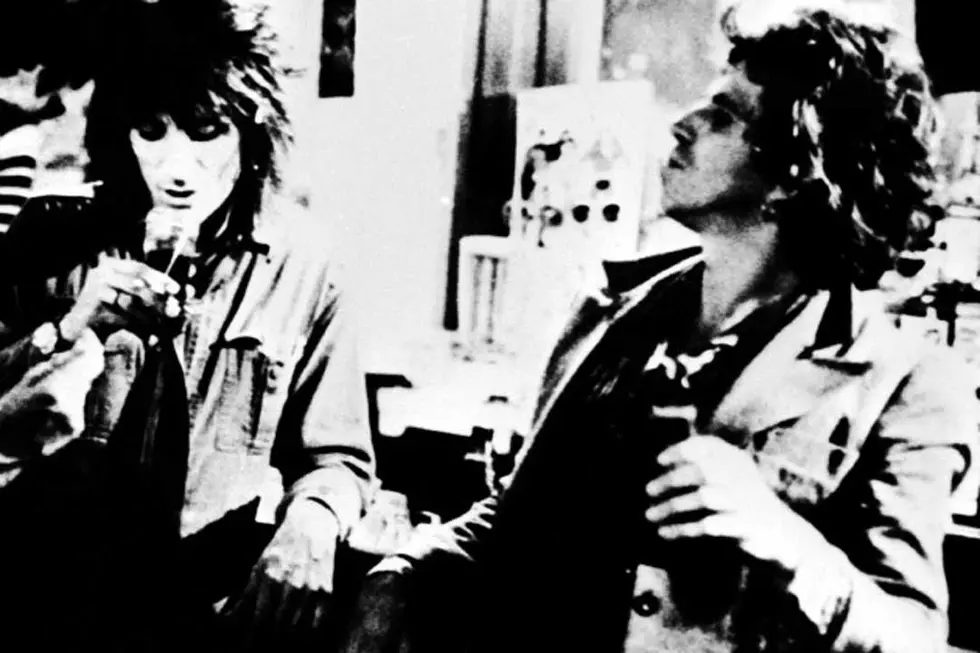
When Keith Richards and Ron Wood Formed the New Barbarians
Being a member of one of the biggest rock bands on the planet has its advantages. Just ask Ron Wood, who used his Rolling Stones connection to round up a pub-rock supergroup for the tour in support of his solo LP Gimme Some Neck.
As it turned out, Neck's April 1979 release landed during a spot of downtime for the Stones, enabling Wood to enlist guitar support from Keith Richards for a spring solo tour. (As Richards later joked to Rolling Stone, "Well, it gives me a chance to do more than just the one song I have with the Stones.")
The rest of the band was no slouches either: Wood's Faces mate Ian McLagan handled keyboards, Stones sideman Bobby Keys played sax, while the rhythm section was held down by fusion bassist Stanley Clarke and Meters member Joseph "Zigaboo" Modeliste on drums.
If not for scheduling snafus, the group could have had even more star power. As Wood told Trouser Press later that year, Neil Young wanted to be involved. "He came down from San Francisco to meet Keith, 'cause they'd never met and, as things had it, the timing was wrong: Keith was unreachable while Neil was in L.A., and then Neil had to return to San Francisco," he chuckled. "I told Neil not to worry about it, that Keith and I would come up and see him there. By the time Keith showed up, though, Neil had gone down to Acapulco to take a break from editing his film."
There were a few more near-misses, including Jeff Beck and Jimmy Page – both of whom were with management that Wood found too difficult to deal with – and Stones drummer Charlie Watts, who begged off because he "really wanted some time off." "He was full of apologies, and I said, 'Don't apologize, just get me another drummer!'" Wood told Trouser Press. "He suggested Zigaboo and I knew he was the one."
Lineup firmly in place, the band needed a name, which they ended up getting from Young as what Wood referred to as a "parting gesture." Christened the New Barbarians, the group made its debut on April 22, 1979, supporting the Stones at a pair of Toronto charity concerts organized to benefit the Canadian National Institute for the Blind. Those shows were planned as part of Richards' efforts to clear his debt to the Canadian legal system after a 1977 arrest for heroin possession, but they didn't spell the end of his involvement with Wood's project; following the Toronto shows, the New Barbarians hit the road for an 18-date U.S. tour.
Perhaps because he'd spent so many years as a supporting player or band member with acts like the Faces, the Stones and Beck, Wood's approach to the New Barbarians set list was fairly democratic. Although the whole thing had been put together ostensibly to promote Gimme Some Neck, the Barbarians' set list included a handful of covers and plenty of Stones cuts, as well as a number of songs featuring Richards on lead vocals. The overall effect was half party, half rock show, all of it held together with the same deceptively ramshackle grace that typified Wood's best playing with all of his other projects.
Stones photographer Henry Diltz later called the New Barbarians tour his "best experience" with the band, musing, "It was just like a Stones tour except that Mick [Jagger] wasn’t there, so there was a certain looseness and freedom because the boss was absent."
"That was a lot of fun. That was all fun. From the moment it started to the time it ended," Clarke recalled in a 2012 interview. "There was a lot of fun playing with these guys. I really enjoyed it. I was getting my 100 percent old rock ‘n’ roll experience. It was great, it was really 100 percent."
Watch the New Barbarians in Concert
It wasn't all fun. For starters, neither Richards nor Wood were living the healthiest lifestyles. As author Stephen Davis put it in his book Old Gods Almost Dead, "Living on alcohol and cocaine, Keith assumed a particularly spectral appearance as his hair began to gray and his face caved in, and rumors of his impending demise again spread through the music industry. Reporters who got backstage noted that the post-performance Keith looked like he’d just been crucified. ... Expenses had been so lavish that Woody and Keith made no money, and Gimme Some Neck stiffed as well. Keith and Woody’s brotherly bond began to strain under financial pressures and Wood’s rapid ascent into drugdom’s First Division."
Sellouts weren't uncommon during the tour, but audiences weren't always cooperative. According to McLagan, the band's Milwaukee stop was derailed by a riot caused by irate fans who'd showed up thinking the gig would include "special guests"; the incident prompted Wood to schedule a makeup date to help the promoter cover the damages, but by the time the New Barbarians returned to town in early 1980, the lineup had dispersed, and the group that actually ended up performing was ironically shorter on star power, with Andy Newmark, Reggie McBride, MacKenzie Phillips and Johnnie Lee Schell subbing in for Clarke, Modeliste and Richards.
In fact, by the following year, the New Barbarians were essentially a thing of the past. Following the U.S. tour, they reconvened in August – without Clarke, who was replaced by Phillip Chen – to support Led Zeppelin at the Knebworth Festival, but with each of the band members consistently tied up with other projects, the group was destined to be short-lived. Perhaps more importantly, Wood wasn't all that interested in consistently maintaining a solo career.
"I never considered being the frontman," he said in a 2007 interview with Mojo. "I think it was because I was the youngest member of every band I've been in. So it was always, 'My day will come.' Although none of my solo albums were properly pushed and none of them made any waves, I still think I could have my own band and be the singer. But I've always loved to embellish other people, accompanying Rod's voice, Mick and Keith's songs. Rod [Stewart] did give me a little advice. He said, "You play guitar, I sing!" But I believe my voice has some kind of ... I'd liken it to [Bob] Dylan, monotone, but with a bit of soul."
Wood's fans would argue that he's being excessively modest in terms of his frontman capabilities; fortunately, as much as he tended to shy away from the spotlight, he seemed to understand he'd caught a bit of lightning in a bottle during the New Barbarians tour. Even though it took an obscenely long time to get it done, he finally released Buried Alive in 2006; the double-disc set was recorded during the band's May 5, 1979, show in Maryland. They ultimately documented the way it played, and the only way the New Barbarians were meant to exist: live and onstage.
"I refuse to get too refined about making records," Wood told Rolling Stone before the tour. "I like the earthy approach to rock 'n' roll, which is why the Stones aren't real different for me. They've been saying all along what I've been trying to get at."
Rolling Stones Compilations Ranked
More From Ultimate Classic Rock
